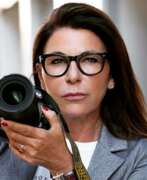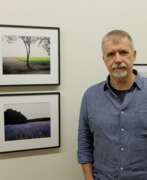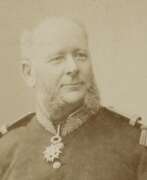Architecture photography Black & white photo


Margaret Bourke-White was an American photographer and photojournalist. She studied photography at the Clarence H. White School of Photography. White, where she developed her trademark style using dramatic angles and strong contrasts of light and shadow.
Burke-White was one of the first women photographers to work for Life magazine, and her images became synonymous with the magazine's coverage of major world events such as World War II and the Korean War. She was also the first woman photographer to work in war zones during World War II, where she captured powerful images of warfare and its impact on civilians.
In addition to war photography, Bourke-White also documented the Great Depression in the United States and was one of the few photographers to gain access to the Soviet Union in the 1930s where she documented Soviet industrialization and the lives of ordinary people.
Bourke-White's work was known for its powerful impact and stark realism. She often risked her safety to get the perfect shot and her images continue to inspire photographers today. She published several books of her work, including 'Eyes on Russia' and 'Dear Fatherland, Rest in Peace'.
Bourke-White left behind a legacy as one of the greatest photojournalists of the 20th century.


Todd Hido is an American photographer and artist. He is best known for his moody and atmospheric photographs of suburban landscapes and homes, which often convey a sense of loneliness and isolation.
Hido's photographic style is characterized by his use of muted colors, soft lighting, and blurred images. He often photographs interiors and exteriors of homes at night, creating a dreamlike and eerie mood. His work is also known for its cinematic quality, and many of his images evoke the mood of film noir.
Hido's work has been exhibited in galleries and museums around the world, and his photographs have been published in numerous books and magazines. He has received many awards for his work, including a fellowship from the National Endowment for the Arts.
Hido's legacy as an artist and photographer continues to influence new generations of photographers and artists. His moody and evocative style has had a significant impact on the field of contemporary photography and has helped to redefine the way that we think about suburban landscapes and the concept of home.


Johann Baptist Isenring was a Swiss landscape painter and printmaker, one of the first photographers in 19th-century Switzerland.
Johann studied painting and aquatint at the Munich Academy of Fine Arts, opened an art studio in St. Gallen in 1828 and soon began publishing his lithographic collection of picturesque views of Switzerland's most remarkable cities and towns.
In 1839, Isenring, fascinated by the discoveries of Niépce and Daguerre, bought equipment for "daguerreotype" and a year later organized an exhibition in his studio in Multtertor, which was probably the first photographic exhibition in the world. Isenring even gave up painting for a while and worked as a photographer for two years, settling in Munich. He made portraits, photographs of architecture, reproductions of paintings and developed a coloring method for his prints, which he patented in America.


Klaus Kinold is a German architectural photographer.
Klaus Kinold studied architecture at the Technical University of Karlsruhe with Egon Eiermann, and then decided not to build but to show architecture. He opened an architectural photography studio in Munich and studied panoramic photography. For more than 25 years, Kinold was editor and illustrator of the Swiss professional publication KS Neues, which featured silicate brick buildings, and lectured on photography at the State Academy of Fine Arts in Stuttgart.
In 1983, Klaus Kinold had his first solo exhibition at the Rudolf Kieken Gallery in Cologne, followed by many other prestigious shows. From 2019 to August 2020, the DKM Museum in Duisburg designed the exhibition "Architecture through the eyes of a photographer", featuring the work of architects Carlo Scarpa, Rudolf Schwarz and Hans Döllgast.
Kinold documented almost all of the famous architects' projects. It was important to the photographer that his preferably black and white photographs were clear, objective, rational and factual in their presentation.


Angela Lo Priore is an Italian portrait photographer living and working in Rome and Milan.
Women are one of the main subjects of Angela's photographs, but scenic design plays an important role here, helping to create surrealistic subjects.
Having experimented with different forms of photography in architecture, advertising and fashion, Angela Lo Priore has found her true artistic expression in portraiture. The portraits of stars and divas of Italian and world cinema are her most famous works. The result of this work is the book "One Hundred Portraits", a gallery of one hundred stunning photographic portraits of famous actors, actresses and directors.


Vera Lutter is a German artist based in New York City. She works with several forms of digital media, including photography, projections, and video-sound installations. Through a multitude of processes, Lutter's oeuvre focuses on light and its ability to articulate the passing time and movement within a tangible image.


Karl Hugo Schmölz was a German photographer.
In collaboration with the great Rhineland architects of his time, including Adolf Abel, Bruno Pohl, Dominik Böhm, Gottfried Böhm, Hermann von Berg, Wilhelm Riefan, Rudolf Schwarz, Hans Schilling, Joachim Schürmann, he created an impressive series of images of the post-war architecture of Cologne. The compilations included shots of architecture, interiors and the city at night. In addition, Schmölz worked with various companies on advertising, especially in the furniture industry.









































